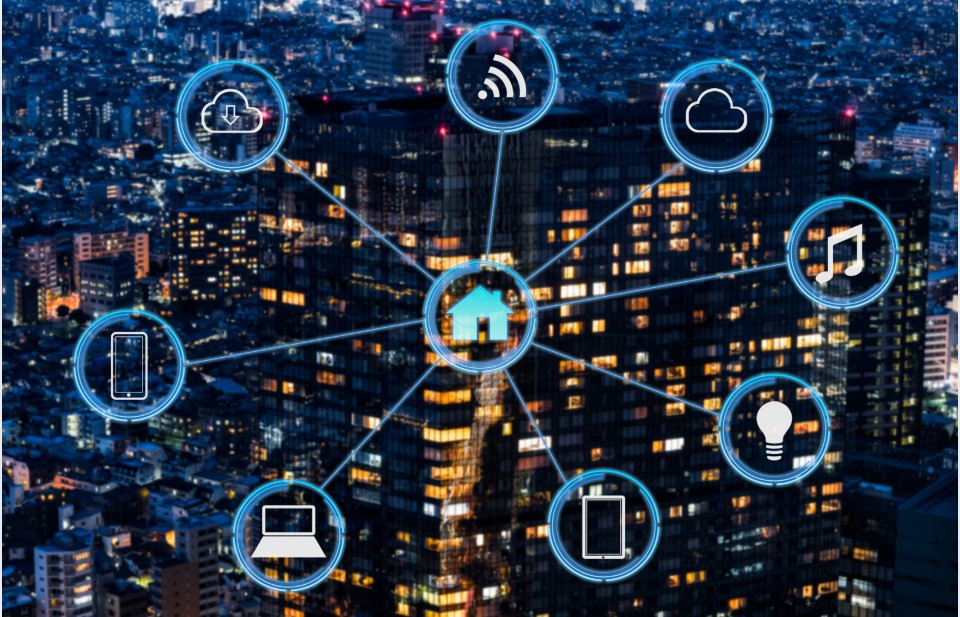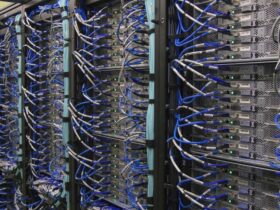Ever wonder how a billion-dollar company can get taken down by a single login? A leaked password. A forgotten admin account. An intern with more access than the CFO.
It sounds absurd—until it happens. And today, it’s happening a lot.
In a world where cyberattacks dominate headlines more than weather reports, the stakes for IT teams have never been higher. Ransomware groups don’t care that your team is short-staffed. Nation-state attackers don’t wait for your next quarterly patch. And no one’s impressed by the perimeter firewall that hasn’t been updated since the office was still serving birthday cake in the break room.
This is the reality of modern IT environments—dynamic, distributed, and inherently complex. Infrastructure no longer sits quietly in a server room. Instead, it sprawls across public clouds, home offices, SaaS platforms, legacy systems, and devices that change locations by the hour.
In this article, we’ll break down what makes modern IT infrastructure different, why yesterday’s security strategies no longer work, and how your team can stay ahead of the risks without drowning in complexity.
The Problem Isn’t Access. It’s Control.
In most companies, the issue isn’t that users have access—it’s that they have too much of it, for too long, with zero visibility or controls in place.
Admin privileges are granted freely and revoked rarely. Users accumulate permissions across roles, projects, and departments, and no one ever goes back to clean up.
But here’s the kicker: many of these credentials aren’t even stolen. They’re given away—carelessly, permanently, and without oversight.
This leads to privilege creep, where users retain access long after they need it. Attackers love that. It means once they get in, they don’t have to go far.
Enter PEDM: Privilege Elevation and Delegation Management
Effective Privilege Elevation and Delegation Management (PEDM) tools solve this problem. Instead of assigning full-time admin rights, PEDM enables:
- Just-in-time access: Temporary elevated access that expires automatically
- Context-aware policies: Permissions based on task, time, and location
- Secure delegation: Give users what they need—and nothing more
For example, a DevOps engineer can be granted root access to a server only during a scheduled maintenance window, and only for two hours. Once the window closes, access is revoked automatically. No manual cleanup. No floating credentials.
By shrinking the window of opportunity, PEDM turns a vulnerable environment into a manageable one.
The Cloud Doesn’t Forgive Weakness
Cloud computing has revolutionized IT operations. It’s fast, flexible, and scalable. But it also removes the illusion of safety that came from hosting everything in a locked-down data center.
In the cloud, a single misconfigured S3 bucket or forgotten API key can expose gigabytes of sensitive data. And the cloud is always on, always exposed, and relentlessly targeted.
Misconfiguration is the Enemy
According to a Gartner report, by 2025, 99% of cloud security failures will be the customer’s fault—not the provider’s.
The cloud gives you tools, but not security. That’s your job.
Here’s where modern IT environments fall short:
- Outdated IAM roles
- Unused service accounts
- Stale credentials with no rotation
- Excessive privileges across cloud resources
Visibility and Least Privilege Are Non-Negotiable
In a cloud-first IT model, your success depends on visibility and control.
- Who accessed what?
- When did they do it?
- What did they touch?
- Did they need to?
Modern IT teams need centralized dashboards, real-time monitoring, and alert systems. Tools like AWS IAM Access Analyzer, Azure AD Conditional Access, or GCP Cloud Audit Logs help, but they must be implemented with discipline.
And once again—least privilege access is key. No god-mode accounts. Rotate credentials regularly. Replace long-lived tokens with identity federation.
Your attack surface lives in the cloud now. Make sure your visibility does, too.
Humans Still Click Bad Links
No matter how advanced your technology stack is, humans remain the weakest link in your security chain.
Phishing and social engineering attacks are still the #1 way attackers gain initial access. Why? Because they work.
Your users are busy. Distracted. Tired. They click the link that looks real. They approve the access request that “seems fine.” One slip, and attackers walk in the front door.
Technology Can’t Save You Alone
You can buy every next-gen firewall, EDR solution, and threat intel feed on the market. It won’t help if:
- Users fall for fake logins
- MFA push fatigue leads to auto-approval
- Admins re-use passwords across environments
Training is important—but so is layered defense.
Think of security like a seatbelt system:
- User training is the warning sign
- Email filters are the airbags
- Access controls are the locked doors
- Logging and alerts are the crash reports
Each layer helps—but none are bulletproof on their own.
Monitoring Elevated Access
Tools that include session recording, alerting, and automated access reviews are critical. If someone with elevated rights behaves unusually, you need to:
- Know about it
- Investigate it
- Respond quickly
PEDM platforms that log every privileged session and support behavioral analytics are no longer “nice-to-have.” They’re essential.
Security Is a Culture, Not a Checklist
Security isn’t a product. It’s a habit.
Modern IT environments are constantly changing—new tools, new endpoints, new integrations. That means your risk posture shifts daily.
Performing a quarterly audit or running a monthly vulnerability scan isn’t enough. If your security depends on a checklist, you’ve already lost.
Build Secure Habits into Everyday Operations
- Role-based access control (RBAC) during onboarding
- Immediate revocation of access during offboarding
- Routine credential rotation
- Daily log reviews
- Access request approvals with justification
Security should be baked into how you hire, build, deploy, and scale. Not tacked on later.
Leadership Must Set the Tone
If executives prioritize speed over safety, teams will take shortcuts. But if leadership emphasizes that security is part of performance, teams will make better choices—even if it adds a few extra steps.
This is where cybersecurity culture is formed. And it makes the difference between an organization that responds to attacks—and one that prevents them.
What Modern IT Environments Really Need
Let’s summarize the essential components of a secure, modern IT environment.
1. Context-Aware Access Controls
Access should be dynamic—not static.
- Use geolocation, device status, and time-based restrictions
- Require approvals for sensitive actions
- Enable just-in-time privilege elevation
2. Zero Trust Architecture
Assume breach. Always verify.
- No implicit trust between services or users
- Authenticate and authorize every request
- Microsegment networks to reduce lateral movement
3. Real-Time Visibility and Alerting
You can’t secure what you don’t see.
- Log all user actions
- Monitor for abnormal behavior
- Set up immediate alerts on sensitive changes
4. Least Privilege and Secure Delegation
Don’t give more access than is necessary. Ever.
- Remove standing admin rights
- Rotate access regularly
- Delegate tasks without exposing full privileges
5. Automated Workflows
Manual processes introduce delays—and human error.
- Use automation for provisioning and deprovisioning
- Schedule regular access reviews
- Automate patching and updates
6. User Training and Awareness
Your tools are only as effective as the people using them.
- Run simulated phishing tests
- Provide ongoing security training
- Encourage secure reporting of suspicious activity
7. Integrated Security Platforms
Point solutions create gaps. Choose integrated tools that talk to each other.
- Centralize identity and access management
- Consolidate logs for easier correlation
- Align endpoint, cloud, and network security under one view
Conclusion
Modern IT environments demand more than traditional security practices. They require contextual access controls, real-time visibility, smart delegation, and a culture of awareness.
Gone are the days of static networks and firewalls at the edge. Today’s infrastructure is cloud-first, hybrid by nature, and constantly evolving. That means your security must evolve too.
- Reduce standing access
- Implement least privilege
- Monitor everything
- Train your people
- Automate what you can
- Lead with a security-first mindset
Because in the end, the threats are getting faster, smarter, and more relentless. And if your controls can’t keep up? One bad login can cost you everything.
FAQs
What is a modern IT environment?
A modern IT environment is a hybrid infrastructure composed of cloud services, on-prem systems, remote work devices, SaaS applications, and APIs—designed for flexibility and scalability but requiring dynamic security controls.
What makes modern IT environments harder to secure?
- Distributed access
- Constant change
- Shadow IT and unmanaged assets
- Human error
- Complex integrations across tools and providers
What is PEDM and why is it important?
Privilege Elevation and Delegation Management (PEDM) allows temporary, controlled access to critical systems based on roles and tasks. It reduces the risk of privilege abuse and limits the impact of credential compromise.
Is zero trust really necessary?
Yes. In today’s perimeter-less world, Zero Trust Architecture helps ensure that no user or device is trusted by default—reducing the attack surface and enhancing security.
For More Latest Update biomagazine.co.uk












Leave a Reply